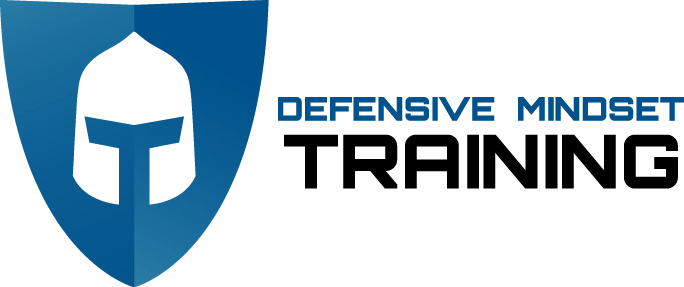The five defensive responses
Beau Doboszenski, Owner/Lead Instructor
Originally published October 4th, 2018
During a knife training class, I recognized that I wasn't only training knife skills - I was also working physical skills - deterrence, and movement. DMT has for years been exploring the concept that defense is a system based on these categories, and that they're not individual techniques but an integrated system. While there are innumerable techniques within each category, all defensive and offensive techniques basically fall within the five I have listed below. And the more we as defenders can become comfortable with them all, the more successful we will be in a violent encounter.
Category 1 - Physical Fight
This is where only your physical body is involved, like when the attack begins and you respond with a physical counterattack. This could be a Startle Response, or a boxing combo, or any other physical action. We develop these responses through martial arts and combatives training. Just like the presentation of a firearm, these skills must become seamless within your defense.
The physical fight can also be offensive instead of defensive, even as you work to defend yourself and your loved ones. For example, you might tackle the active shooter, or pick a target in a multiple threat situation and sucker punch them first.
Category 2 - Deploy and Use a Tool to Fight
In this category, you are using tools in your defense. This takes a large amount of skill, and it's our primary focus at DMT. To succeed in this category, your firearm deployment must be fast and round placement accurate. But remember, the firearm isn't the only tool that's available to you - there are knives, flashlights, and improvised weapons. Once again, it seems that Ernest Emerson of Emerson Knives said it best: your goal isn't to be a knife fighter or a gun fighter, but a fighter. Then whether you have a gun, a knife, a stick, or a brick, you're a dangerous predator.
Each of the tools that I've mentioned will be deployed and used differently. A folding knife draw is different than a fixed blade draw. Using a tactical flashlight for defense is different from using a deep cover handgun. It's important to practice and train with any tool you might use in a defensive encounter.
Category 3 - Deterrence
The regular practice of deterrence is one thing that makes DMT unique. From a fully developed system of Situational Awareness via Avoid-Deter-Defend to a complete system of mental deterrence in the Concealed Carry Masters Course, DMT has worked diligently to help you build this crucial set of skills and responses for armed as well as unarmed defense.
Remember that physical defense is the actions that will physically disable the threat, rendering him unable to harm you. These physical actions could potentially require you to answer for them in court. Deterrence is about the words and actions that will mentally disable the threat from continuing their crime or attack. Deterrence protects you not only physically, but potentially legally as well, and is therefore a valuable skill to have. As with all other skills, it takes regular training to be prepared to use this successfully in a real-life encounter.
Category 4 - Run/Move
This category is about not standing still when you might take the opportunity to move to a better position. This could be slipping a strike, flanking a threat, getting off the line of attack, or even running away and escaping if that option is available to you. Remember that complete escape may be a viable option - if we only train to deter and defend, we may forget to look for methods of escape, which are often the wisest choice of action.
Category 5 - Combination
None of these categories need to operate independently. In fact, as you progress in your skill, you will find yourself naturally combining these categories and you can train to do so seamlessly.
Some examples include:
Flanking a threat while shooting them with your handgun (Move and Tool).
Startle Response in a close quarters attack, striking a few times, and then drawing a knife (Physical Fight to Tool).
Deterring a threat while preparing to draw a firearm and moving to a more defendable position behind the axle of a car (Deterrence, Move, and Tool).
If you understand these foundational aspects of developing a complete defensive system, you can analyze what you're doing or have done to fulfill each category. It then becomes pretty easy to see where you're doing well, and where you need more work.
